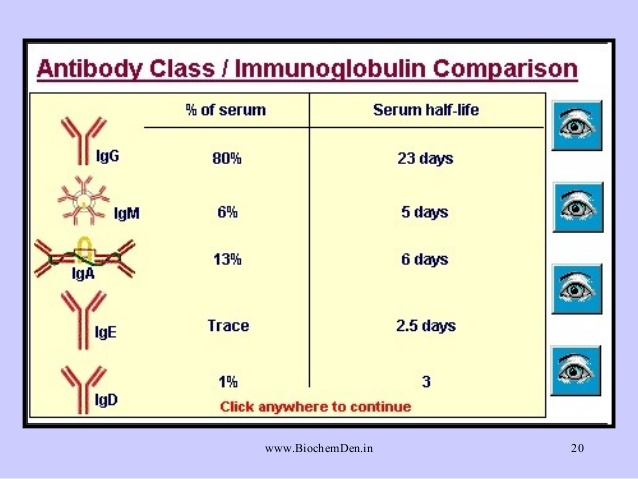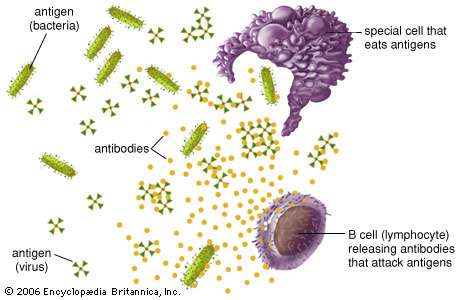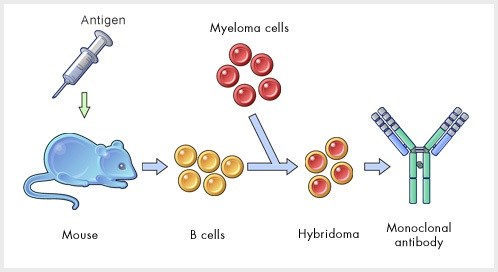抗体的种类 Type of Antibodies
超敏反应 Hepersensitivities
单克隆抗体 Monoclonal Antibodies
https://www.britannica.com/science/antibody
https://courses.lumenlearning.com/microbiology/chapter/hypersensitivities/
https://microbenotes.com/monoclonal-antibodies-types-uses-and-limitations/
http://beyondachondroplasia.org/blogue/?p=6662&lang=en
Antibody binding happens during an immune response between antibodies and specific antigens. Antigens are any cells or molecules that are recognized by the body as foreign, or not belonging to the self. Antigens can take many different forms from disease-causing organisms, like bacteria and viruses, to toxic molecules or allergy producing molecules, allergens. The presence of antigens within the body stimulates the cells of the immune system, including those that produce and secrete antibodies.
Antibodies are proteins that have a distinctive basic structure. They are made up of four polypeptide chains that are held together by disulphide bridges, which are bonds that form between sulfur atoms. Each antibody has two long, or heavy, chains and two short, or light, chains. Each light chain is found at the end of one of the heavy chains. The four chains are held together in a Y shape, which allows flexibility so antibody binding can occur.
Each antibody is specific to a particular antigen. The specificity of the antibody is determined by the antigen binding site found at the end of each light chain. The sequence of amino acids found at the end of each light chain forms a three-dimensional shape that is complementary to the shape of the antigen. As there are two light chains for each antibody, there are two antigen binding sites, so each antibody can bind to two antigens.
There are five different classes of antibodies. As they are all globular proteins produced as part of the immune response, they are called immunoglobulins, with each class designated by a letter, G, M, A, D and E. While all immunoglobulins share the same basic structure, the different classes are based on differences in the heavy chains. There are can be many different antibodies within each class with specific antibody binding occurring between the specific molecule and its complementary antigen.
Each of the different classes of antibodies binds to different types of antigens and has different roles in the immune system. For example, immunoglobulin G, IgG, can bind to two antigens, stimulates other cells in the immune system and can cause agglutination. Agglutination occurs when antibody binding occurs between multiple antibodies and antigens. This can happen when an antigen also has more than one binding site, which allows it to bind to more than one antibody. As more and more antibodies and antigens bind together, they form a clump, or agglutinate, which aids in the destroying of the cells with the antigens.What is Antibody Binding? (with pictures)
https://www.wisegeek.com/what-is-antibody-binding.htm






